Fungi and Protostomes
1/97
Earn XP
Description and Tags
Bruhbruhbruh
Name | Mastery | Learn | Test | Matching | Spaced |
|---|
No study sessions yet.
98 Terms
Opisthokonta
Part of unikonta clade with amoebozoa
includes Nucleariids, Fungi, Choanoflagellates, and Animalia
Similarities between Fungi and Animalia
Multicellular (most Fungi and ALL Animalia)
Use chitin as structural material (Synapomorphy)
No plastids (plesiomorphy)
Heterotrophic (plesiomorphy)
Glucose stored as glycogen (Synapomorphy)
Produce melanin to protect from UV radiation (Synapomorphy)
Fungi Importance
Decompose organic material
Bioremediation
Pest control
Antibiotics
Cooking
Hyphae
makes up main body
cytoplasmic filaments
Mycelium
mass of underground hyphae, used for feeding
No
Do fungi have true tissues?
Aseptate/Coenocytic
Without walls separating nuclei within hyphae (multinucleate)
Septate
Hyphae with 1 or 2 cell walls separating nuclei
Fungi Lifestyles
Commensualistic, Mutualistic, Parasitic, Saprophytic
Fungi Reproduction
haploid dominant lifestyles
only one diploid cell is the zygote (NO multicellular diploid stage)
Haploid spores from meiosis/mitosis
Reproductive structures are used to differentiate between different groups of fungi
Delayed Karyogamy
“gamete” cells cannot fuse without their nuclei fusing immediately
Groups of Fungi
Chytridiomycota
Zygomycota
Glomeromycota
Dikarya→Ascomycota + Basidiomycota
Chytridiiomycota
water molds (share name with oomycetes)
Only phylum with:
Isogamous Reproduction
Flagellated sperms and isogomites (ZOOSPORES)
Alternation of generations (sporophyte dominant)
mostly saprophytic w/ some being parasitic
aseptate hyphae
aquatic habitats
Chytridiomycota Life Cycle
Thick-walled sporangium→ haploid motile zoospores
Thin-walled sporangia→diploid motile zoospores
Gametangia→produce haploid isogamete
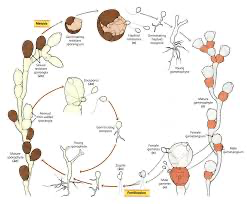
Zygomycota
Bread molds
Aseptate Hyphae
Normally, asexual reproduction with a sporangium and a sporangiophore
Characterize by zygospore (diploid zygote and protective wall)'
Zygosporangium is product of 2 haploid gametangia merging
Mostly saprophytic
karyogamy
fusion of two haploid cells with 2 distinct nuclei
Zygomycota life cycle
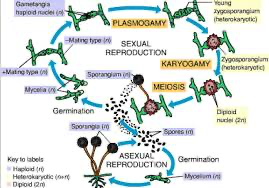
Glomeromycota
Aseptate hyphae
Mutualistic
Arbuscular (Endotrophic) Mycorrhizae
Mycorrhizae
Hyphae enter the root cells of the plant and form arbuscules
Complete lack of sexual reproductive structures
No known asexual reproductive structures
Ascomycota and Basidiomycota
Septate hyphae
Often from Ectotrophic Mycorrhizae (Hyphae surround plant root cells)
Form fruiting bodies
Large, visible structures
Used for sexual reproduction and spore production
Ascomycota
Sac fungi
~30,000 species: morels, truffles,
many yeasts, mildew, and many
“molds”
Conidiophores: a branching structure
used for asexual reproduction, spores
called conidia at the tips
Ascocarp: fruiting body used for sexual reproduction, made of intertwined dikaryotic and monokaryotic hyphae
Produce a diploid zygote, which then undergoes meiosis and mitosis to produce 8 haploid ascospores
Mostly saprophytic
The 2 main types of Ascocarps (Enclosed and
cup-shaped)
Parasitic sac fungi
Extend specialized absorption cells from
hyphae into the host to steal water and
nutrients
Erysiphe (powdery mildew)
Imperfect sac fungi
Do not have the ascocarp stage
Reproduce asexually via conidiophores and conidia
Penicillium
Basidiomycota
Club fungi
~25,000 species: mushrooms, puffballs,
shelf fungi, rusts, smuts
Lack of asexual reproduction
Basidiocarp (Mushroom): fruiting structure, formed from intertwined dikaryotic hyphae
Basidia: microscopic cells in the fruiting body (lining the gills) that produce a diploid zygote, which then produces haploid spores (basidiospores)
Yeasts
Polyphyletic taxon
Highly derived unicellular
Ascomycota and Basidiomycota
Lost the ability to form hyphae and other multicellular structures
Generally reproduce asexually budding
Saccharomyces cerevisiae
Lichens
Mutualistic association
Fungal component (usually Ascomycota) + photosynthetic component (Chlorophyte or Cyanobacteria) + Basidiomycota Yeast
Survive harsh conditions
Independent reproduction for all components
Zygomycota
Rhizopus (Bread mold)
Asscomycota
Penicillin
Basidiomycota
Coprinus
Lichens
Thallus
Kingdom Animalia
All multicellular
No cell walls
Most have unique tissues
Most have sexual reproduction
Most are diploid
The vast majority are aquatic
Animal Life Cycle
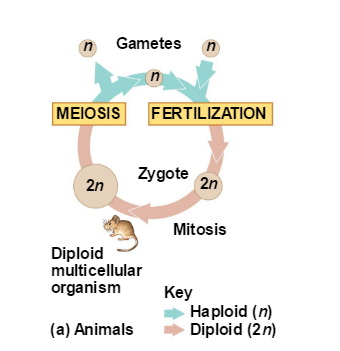
Classification of Animalia
Symmetry
Asymmetrical (Porifera), Radial (Cnidaria), Bilateral (All other animal phyla)
Tissue & organs
Presence/absence/type of body cavity
Embryonic development
DNA
No true tissues
One germ layer
Porifera
Diploblastic
Two layers: endoderm and ectoderm
Cnidaria
Triploblastic
Three layers: endoderm, mesoderm, ectoderm
All other Animalia
Phylum Porifera
Sponges
Asymmetrical
No tissues or organs
Many cells are totipotent (can divide into any cell)
Adults are sessile (do not move on their own)
Serially hermaphroditic
Males and females at different parts of the life cycle
Cells embedded in a gelatinous matrix called the mesohyl
Skeleton can be:
Fibrous–soft, protein-based (spongin)
Mineralized – hard, made of silicon dioxide or calcium carbonate spicules
90% have a skeleton made of both
2 taxa:
Silicea
Calcarea
Sponge anatomy
Ostia
Spongocoel
Osculum:
Choanocysts
Amoebocytes
Spicules
Ostia
incurrent pores formed by the porocyte cells
Spongocoel
cavity within the sponge
Osculum
opening where water exits
Choanocysts
filter-feeding cells with flagella, lining the interior of the sponge
Amoebocytes
move around the mesophyll (intracellular spaces), similar to an amoeba, to collect food and secrete calcium carbonate/silicon dioxide spicules
spicules
a spikey structure that forms skeleton
Phylum Cnidaria
Radial symmetry
Diploblastic
Tissues
Epidermis and inner gastrodermis are separated by mesoglea
Statocysts: primitive sense organs
Hydrostatic skeleton
Supported by fluid pressure
Gastrovascular cavity: single opening for feeding and expelling waste
Hermaphroditic
2 major taxa:
Anthozoa
Anemone
Medusozoa
Jellyfish
Cnidocytes
Specialized cells that sting prey for food or sting in defense
Nematocyst
Stinging organelles within the cnidocytes
Anatomy of Cnidaria
Cnidocytes
Nematocyst
Anthozoa
Sea anemones and corals
Polyp body form is only Sessile (mostly)
Reproduction:
Sexual
Asexual by budding or dividing
All marine
Many colonial
Some make exoskeletons of calcium carbonate (Coral)
Medusozoa
Cnidarians with a medusa life stage
3 taxa within:
Hydrozoa
Scyphozoa
Cubozoa
Hydrozoa
Both the polyp and the medusa body forms
Polyps are usually dominant in the life cycle
The polyp stage is often colonial
Asexual reproduction by budding
Portuguese man-of-war (Physalia)
Hydra
Scyphozoa
Medusa's body form is dominant, polyp form reduced
Segmented polyps asexually reproduce
Medusas only reproduce sexually
Turritopsis dohrnii
Cubozoa
(Box jellies/sea wasps)
Box-shaped medusa (no polyps)
Four tentacles at each corner
Sexual reproduction only
Well-developed visual sense allows for hunting
One of the most venomous animals
Chironex fleckeri can kill an adult human in minutes
True tissues
Which of the following is NOT a characteristic or structure found in Porifera? (found in eumetozoans)
Capturing prey and defense through stinging
What is the function of the cnidocyte, the distinguishing cell type of Cnidarians?
Cnidaria
Corals are found in _____ which Phylum.
Porifera
Choanocytes are found in _____.
basidiomycete yeast
cyanobacteria
ascomycete fungus
algae
For the last 150 years or so, it was thought that lichens were composed of a symbiotic relationship between two organisms; an alga and a fungus. New data has shown that they are frequently found to contain at least three organisms, that could include (More than one answer may be correct):
characteristics of Cnidarian
Alternation between motile medusa and sessile polyp stages
Specialized stinging cells called cnidocytes
Presence of mesoglea between tissue layers
Diploblastic body structure with radial symmetry
Ectoderm
•outermost layer
•Becomes skin & nervous system
Endoderm
•innermost layer
•Becomes gut, liver, lungs
Mesoderm
•middle layer
•Becomes skeleton, heart, kidney, muscle, and blood
Acoelomate
No body cavity
Pseudocoelomate
Body cavity between mesoderm & endoderm
Coelomate
The body cavity is completely lined with mesoderm
coelom
•Fluid cushions suspended organs
•Inner and outer mesodermal layers (mesentery) suspend the internal organs
•Allows internal organs to grow and move independently of the outer body wall
Triploblastic
Deuterostomes
Protostomes
Protostomes
Ecdysozoa
Lophotrochozoa
•The embryonic blastopore becomes the mouth
•Coelom formation is schizocoelous (forms when mesodermal tissue “splits”)
•Cells are determinate (pre-programmed)
Deuterostomes
•Embryonic blastopore becomes the anus
•Coelom formation is enterococcus (forms when pockets of the primitive gut bud off)
Cells are indeterminate (stem cells)
Superphylum Ecdysozoa
•Ecdysis (molting): all members of this clade shed their outer body covering
•Reduced cilia
•More species than all other animals combined
Vinegar Eels
Horseshoe crab
Spiders
Centipede
Millipede
Grasshopper
Crayfish
Hermit Crab
Nematoda
•A.k.a. Roundworms
• Pseudocoelomate
•Vermiform (worm-shaped)
•Complete digestive tract
•Ventral and dorsal nerve cords
•Tough cuticle will be shed at some point in their life
•Longitudinal muscles only (whiplike movement)
Mostly dioecious
Vinegar eels
Anthropoda
•The most numerous and diverse group of animals
•Arthro (joint) podos (foot)
•Characteristics
•Jointed appendages
•Segmented body
•Coelom becomes part of an open circulatory system (hemocoel) with hemolymph for blood
•Exoskeleton composed of chitin
•Dioecious
•Ventral nerve cord
•Cephalized ganglia (brain)
Subphylum:
Myriapoda
Chelicerata
Hexapoda
Subphylum Myriapoda
•Single pair of antennae
•Single pair simple ocelli (eyes)
•3 pairs of modified appendages for mouthparts
•Breathe with spiracles and tracheae
•Centipedes (class Chilopoda)
•Carnivorous
•1 pair of legs per segment
•Poison fangs
•Millipedes (class Diplopoda)
•Herbivorous
2 pairs of legs per segment
Subphylum Chelicerata
•Possess Chelicerae (pincers or fangs)
•Possess Pedipalps (accessory appendages beside the mouth)
•No antennae or mandibles
•3 or 4 pairs of ocelli (eyes)
•2 body regions
•Cephalothorax & abdomen
•6 pairs of appendages in total
•4 pairs of legs, 1 set of chelicerae, 1 set of pedipalps
•Breathe using gills or book lungs
•Often have a vestigial tracheal network
(Spiders, Horseshoecrap, Scorpions)
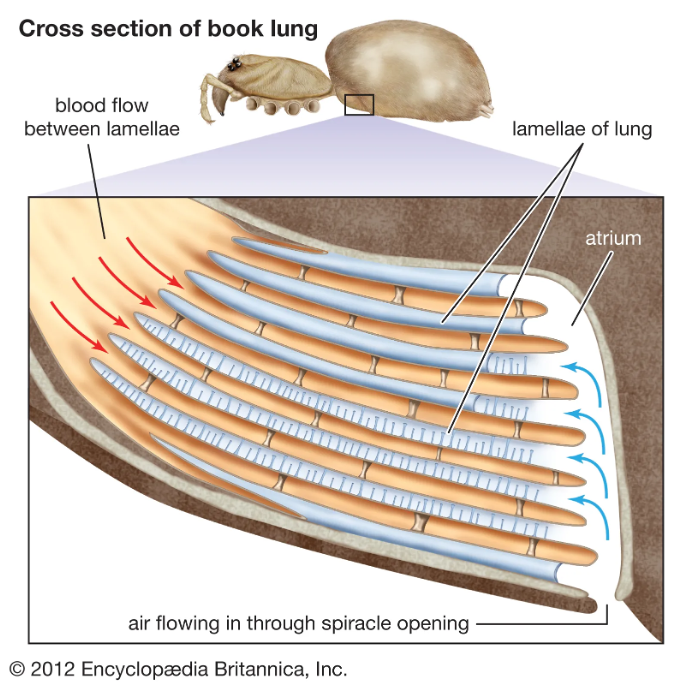
Subphylum Hexapoda
•Insects & related taxa
•3 pairs of walking legs
•Wings (on most)
•Also have special feeding appendages and sensory organs that vary greatly among species
•Breathe using well-developed spiracles and tracheae
(Grasshoppers)
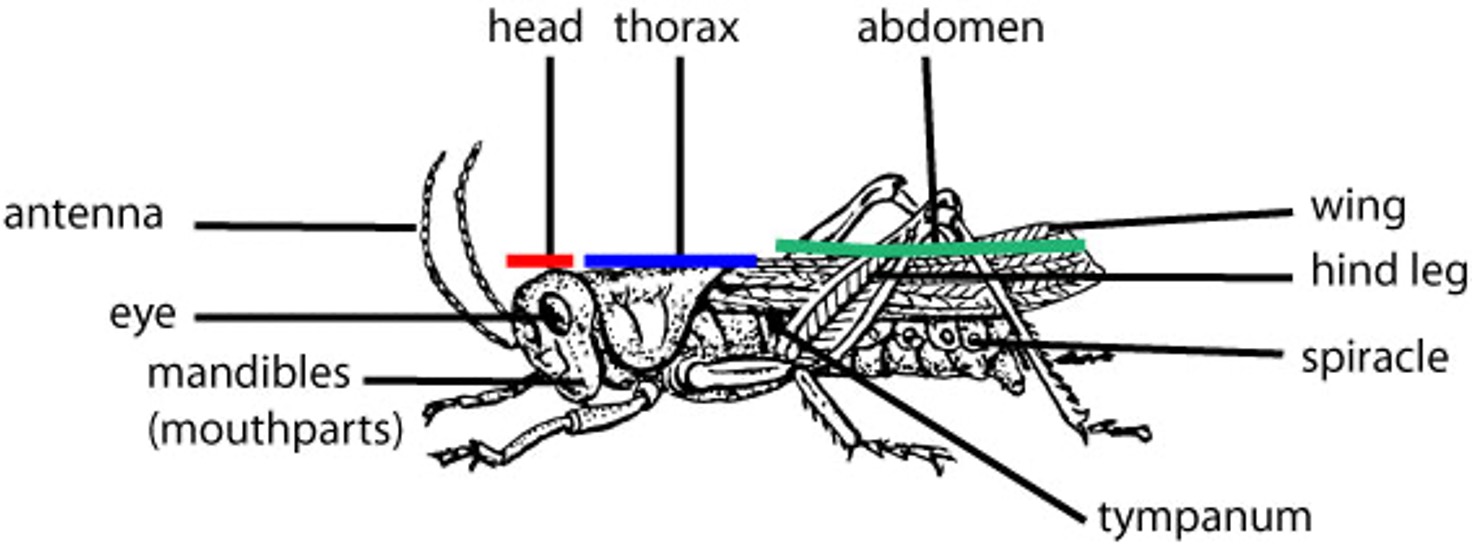
Spiracles
Holes on the side of hexapods that allow them to breathe
Tympanum
Hearing organ located on the first segment of the abdomen
Subphylum Crustacea
•Most marine, some freshwater, a few terrestrial
•2 pairs of sensory antennae
•Each body segment has 2 appendages
•Antennae, mouth parts, chelipeds, legs, swimmerets, and tail fins
•>3 pairs of walking legs
•Biramous (branched) appendages
Gills or “branchiostegal lungs”
Hermit Crabs, Lobsters, Crayfish
Know Crayfish anatomy
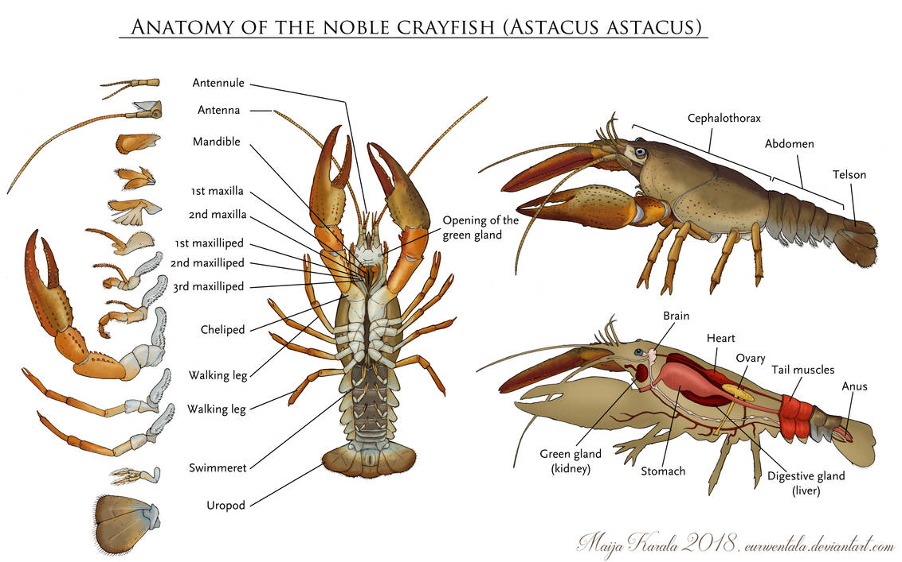
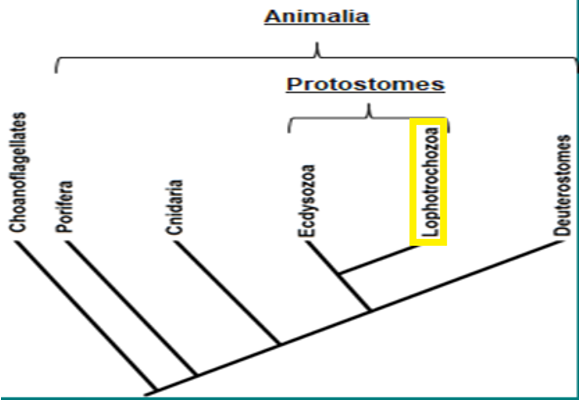
Superphylum Lophotrocozoa
•10-15 phyla
•4 defining features found in many phyla:
•Increased cilia
•Many have spiral cell division/cleavage in their embryos
•Lophophore: the crown of ciliated tentacles that surrounds the mouth, used for feeding
•Trochophore: ciliated larval stage of Annelids and Molluscs
Planaria
Tapeworms
Leech
Earthworms
Polyplacophora: Chiton
Snails
Clam
Squid
Brachiopods
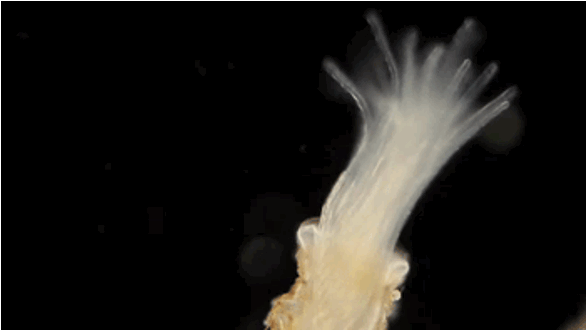
Platyhelminthes
•Flatworms
•Acoelomate
•Hermaphroditic
•First example of cephalization in the fossil record
•Ladder-like nervous system
•No circulatory system
•Incomplete digestive tract (for some) is large and branching
Classes:
Planarians/Turbelllaria
Cestoda
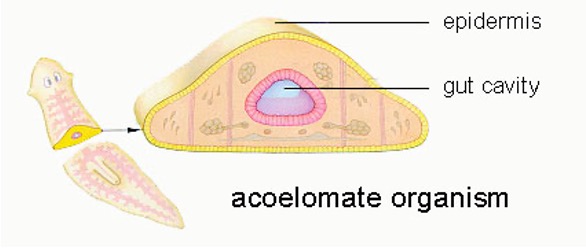
Class Turbellaria
•Planarians
•Free-living predators or scavengers
•Have protonephridia (flame cells) used for osmoregulation
•Ocelli (eye spots)
• A protrusible pharynx used for eating and expelling waste
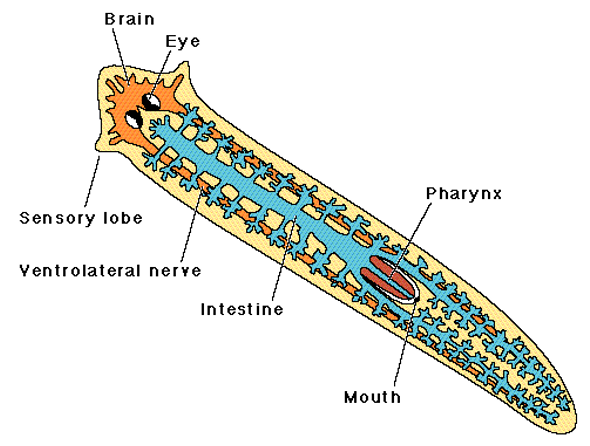
Class Cestoda
•Tapeworms
•Internal parasites
•No digestive system (?)
•Attaches to the host via a scolex
•Shed Proglottids when mature
Platyhelminthes
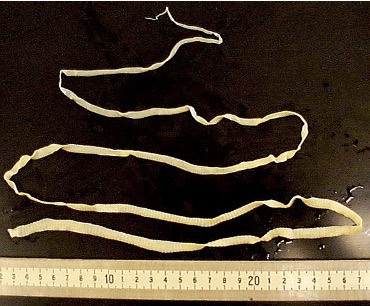
Annelida
•Segmented worms
•Characteristics
•Vermiform
•Trochophore larval stage (shared with Molluscs)
•Segmented body (convergent with arthropods and vertebrates)
•Truly segmented body cavity
•Divided by septa
•Closed circulatory system (convergent with vertebrates and cephalopods)
•Cerebral ganglion & ventral nerve cord
Classes:
Errant
Sedentaria
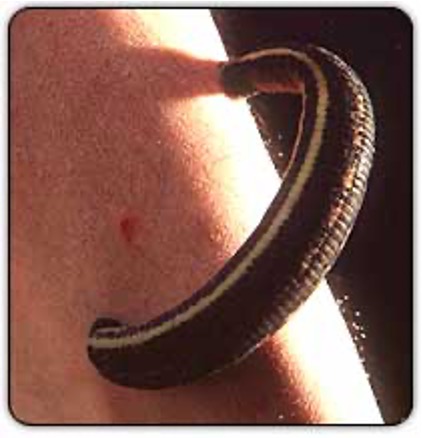
Class Errantia
•Latin: Errere, to wander
•Free-living mobile marine worms
•Possess a pair of fleshy parapodia with tiny, chitinous chaetae or setae (bristles) on each segment
•Possess well-developed sense organs
•Antennae & eyes
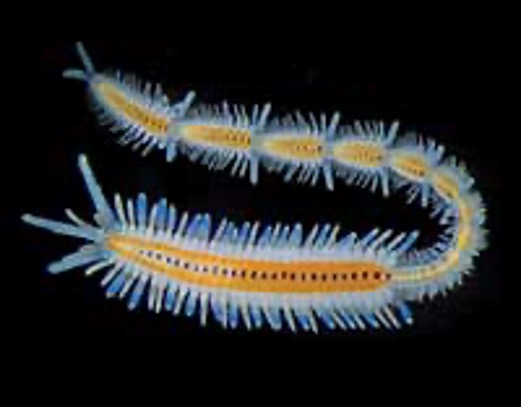
Class Sedentaria
•Sedentary marine tubeworms, earthworms, and leeches
•Possess few to no setae and often have a clitellum
•Glues organisms together while mating
•Secretes a cocoon around eggs
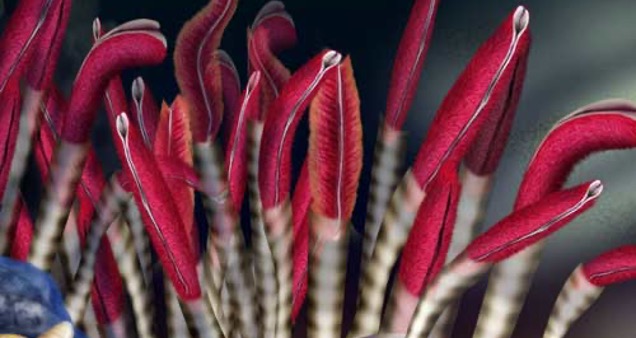
Mollusca
•Latin: molluscus (soft)
•Mostly marine
•Have a trochophore larval stage
•Characteristics
•Foot: movement and capture food
•Visceral mass: contains the organs
•Mantle: Secretes shell
•Radula: scrapes food
•Open circulatory system: no blood vessels except the heart
Classes:
Polyplacophora
Gastropoda
Bivalvia
Cephalopoda
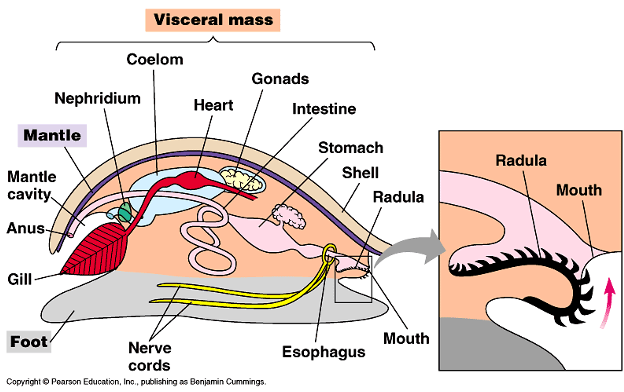
Class Polyplacophora
•Chitons
•Greek: poly (many) + plak (plate) + phoros (to bear)
•Segmented shell (8 plates)
•Not true segmentation
•Scrapes algae off rocks with radula
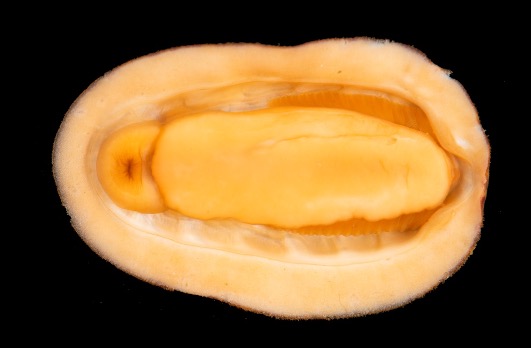
Class Gastropoda
•Slugs, snails, and relatives
•Greek: gaster (gut) + podos (foot)
•Many exhibit torsion, or 180-degree rotation of visceral mass
•2 or 4 sensory tentacles with eyes on the head
•Many have shells
Most have radula
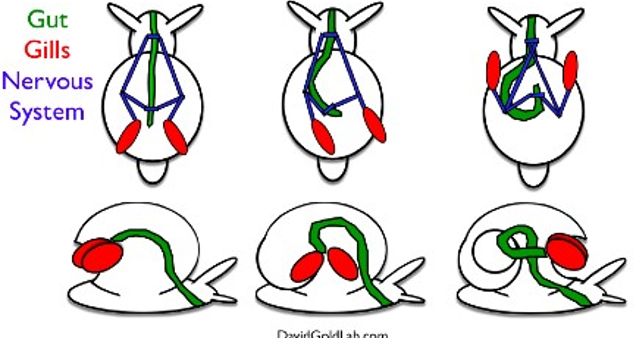
Class Bivalvia
•Latin: bis (twice) + valva (leaf or shell)
•Clams, oysters, scallops, mussels
•Protected between two hinged valves (left and right)
•Incurrent & excurrent siphons
•Lost radula
•4 oversized gills (ctenidia) for respiration and filter-feeding
Class Cephalopoda
•Latin: cephalic (head) + podos (foot)
•Chambered nautilus, squid, and octopus
•All are predators
•Characteristics:
•Closed circulatory system with 3 hearts
• Well-developed eyes
•Highly intelligent
Dioecious
•Chromatophores
•Pigmented cells that help change color
•Octopus have 8 arms as do squids, but squids have 2 longer tentacles with hooks for grabbing prey
•Pen
•Remnant of a shell, only found in squid
•Have a beak
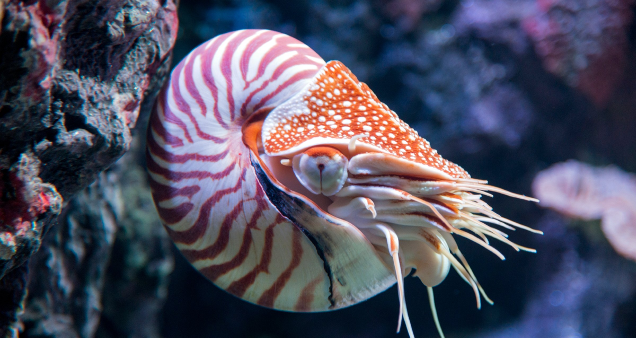
Brachiopoda
•Sessile & coelomate
•Protected between two hinged valves (top and bottom)
•Top shell is usually smaller than the bottom one
•Lophophore and pedicle present
•Abundant in fossil record (Paleozoic)
•Usually dioecious
Lost spiral cell cleavage
Classes:
Inarticulata
Articulata
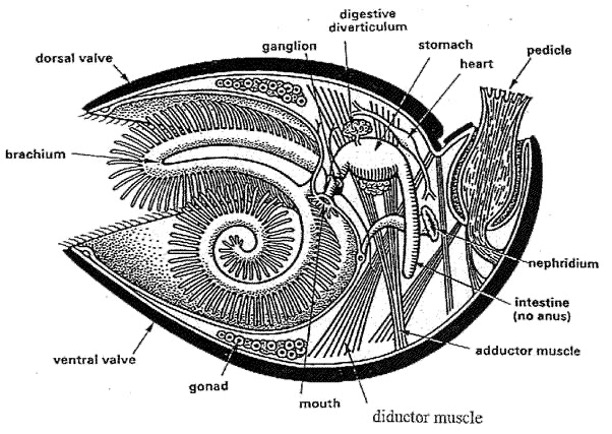
Class Inarticulate
•Primitive
•Simple hinge mechanism
•Pedicle anchors in soft sediment
•Bristles around shell (setae)
•Valves are soft and flexible
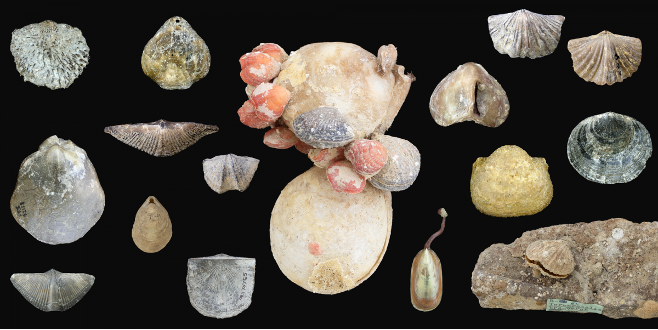
Class Inarticulata
•Many have teeth that lock shells closed
•Complex hinge
•Pedicle anchors on rocks
•No setae
•Very few are alive today
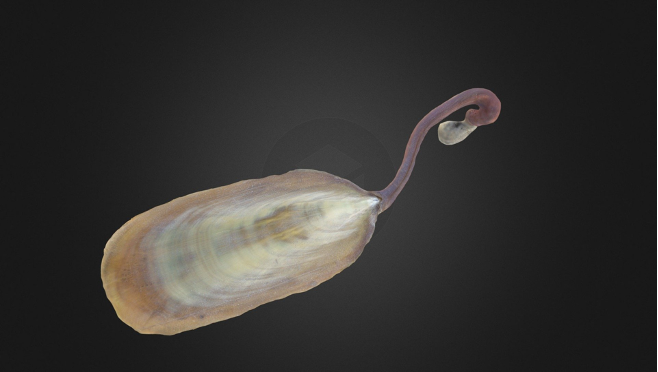
Squid Anatomy

Earthworm Anatomy
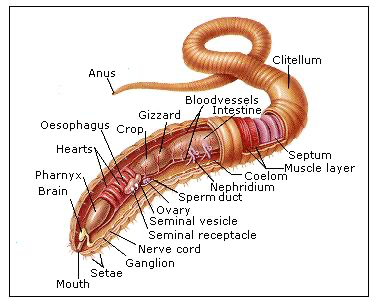
Brachiopoda
Which of the following clades do NOT have spiral cleavage?
Nemata
Arthropoda
Brachiopoda
Mollusca
tagmosis
The evolutionary process where body segments have fused together to make specialized regions.
totipotent
The ability to become any cell type in the organism
Nemata
Which of the following phyla always has a complete gut?
Platyhelminthes
Nemata
Brachiopoda
Sexual Reproduction
Multicellularity
Heterotrophy
Flagellated Cells (at some point in the life cycle)
Animals are characterized by which of the following?